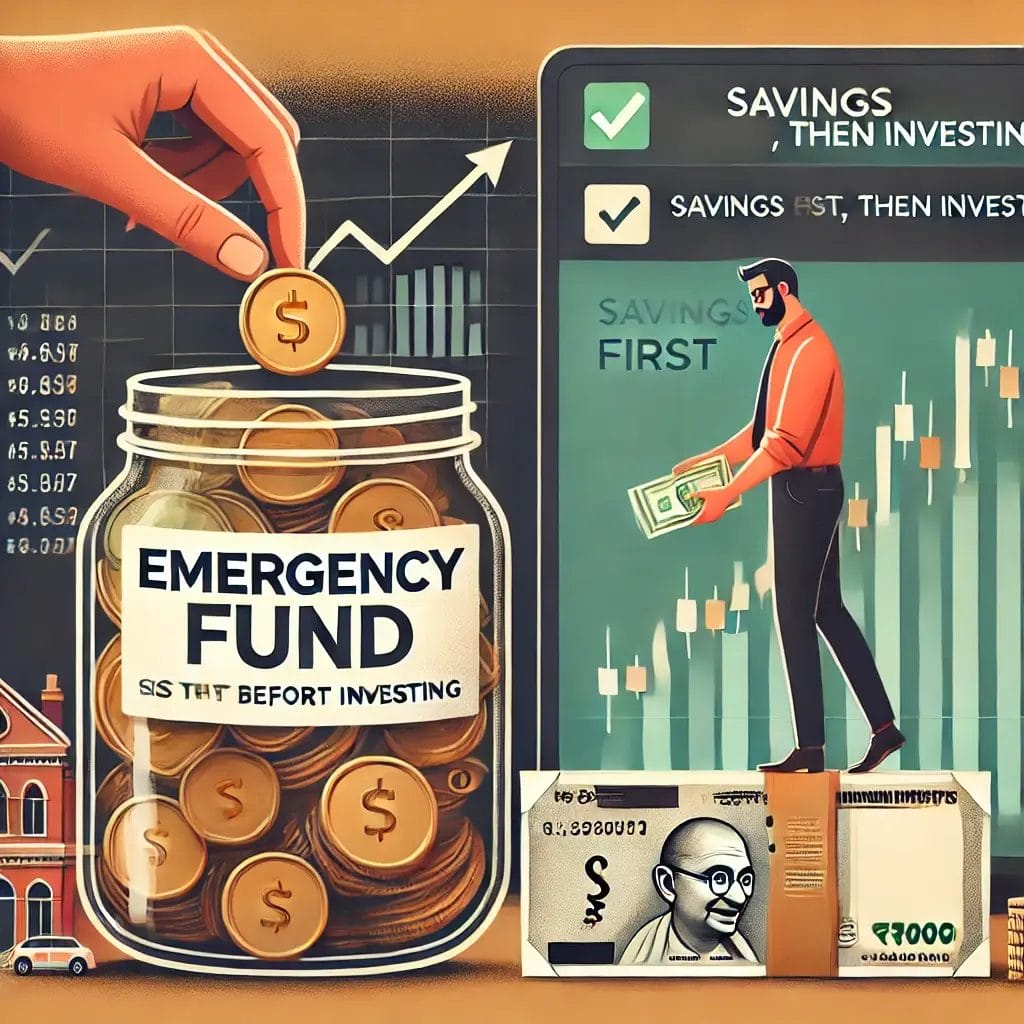
Investing is a fantastic way to build long-term wealth and achieve your financial goals. But before you jump into the stock market or any other investment vehicle, there’s a crucial first step: building an emergency fund. An emergency fund is essential for financial stability and peace of mind. It’s your financial safety net for life’s unexpected bumps in the road.
What is an Emergency Fund?
An emergency fund is money set aside specifically to cover unexpected expenses. It’s your emergency savings, a financial cushion you can tap into when life throws a curveball. Think of it as an emergency corpus. It’s not for everyday expenses; it’s for genuine emergencies like job loss, medical emergencies, car repair, home repair, or other unforeseen circumstances.
Why is an Emergency Fund So Important Before Investing?
The importance of building an emergency fund before investing cannot be overstated. Here’s why:
Protection Against Debt: Financial emergencies can strike at any time. Without an emergency fund in place, you might have to resort to high-interest credit cards or loans to cover these costs. This can quickly lead to a debt cycle that’s hard to break free from. An emergency fund helps you avoid going into debt during these tough times.
Preserves Your Investments: Imagine you’ve started investing, and then a major expense pops up. Without an emergency fund, you might be forced to sell your investments, potentially at a loss, to cover the cost. An emergency fund helps you protect your investments and keep them working towards your long-term financial goals.
Peace of Mind: Knowing you have a financial safety net provides immense peace of mind. It reduces stress and allows you to focus on your financial goals without constantly worrying about unexpected expenses. This financial stability and peace of mind is invaluable.
Foundation for Financial Planning: Building your emergency fund is the foundation of sound financial planning. It’s the first step towards achieving your financial goals, whether it’s buying a house, retirement savings, or investing in the stock market. Bankrate’s 2024 annual emergency savings report suggests that many Americans still do not have sufficient emergency savings.
How Much Should You Save?
The amount you need in an emergency fund depends on your individual circumstances and living expenses. A common recommendation is to aim for three to six months’ worth of living expenses. Some experts recommend a larger emergency fund, especially if you have dependents or an unstable income. The amount for your emergency fund should be something you are comfortable with.
Steps to Help You Start Building Your Emergency Fund:
1. Set an Emergency Fund Goal: Determine how many months of expenses you want to cover and calculate the total amount you need in your emergency fund. This is your emergency fund goal.
2. Start Small: Don’t feel overwhelmed by the total amount. Start saving whatever you can, even small amounts, and build up your emergency fund over time.
3. Automate Your Savings:** Set up automatic transfers from your checking account to your savings account to ensure consistent contributions. This is a crucial step to help you start building your emergency savings fund. Automate savings from your checking account to your savings account, or even better, directly to your dedicated emergency savings account. You can also set up automatic transfers from your checking account to your emergency savings account to ensure consistent contributions.
4. Dedicated Savings Account: Keep your emergency fund in a liquid, easily accessible account, such as a high-yield savings account, money market, or dedicated emergency savings account. This is not the time for less liquid investments like mutual funds or investing in the stock market. You need the money readily available in case of an emergency. Keep your emergency fund separate from your checking account.
5. Review Your Savings Regularly: Periodically review your savings and adjust your contributions as needed. As your income or expenses change, you may need to adjust your emergency fund goal.
6. Resist the Urge to Use It: An emergency fund is for true emergencies only. Avoid dipping into it for non-essential purchases.
Building an emergency fund is crucial for financial security. It’s the first step you should take before you start investing or pursuing other financial goals. It provides a financial cushion, protects your investments, and gives you peace of mind. So, start saving today and build your emergency fund to help you navigate life’s unexpected turns.
